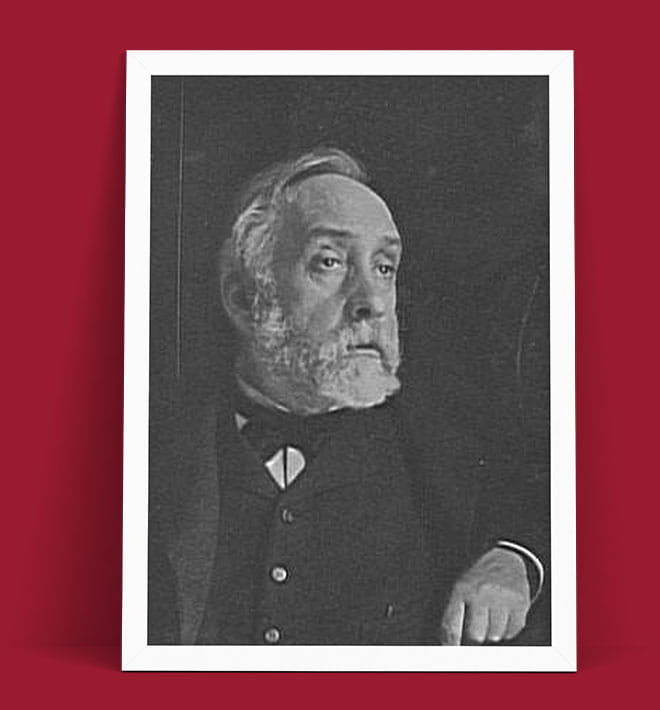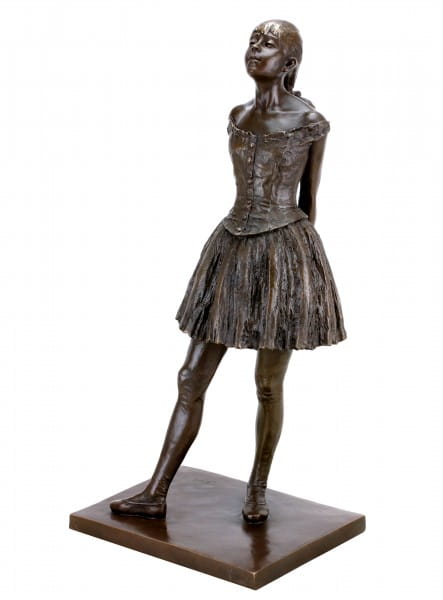Prices incl. VAT, free shipping worldwide
Ready to ship today,
Delivery time appr. 3-6 workdays










Product description
"Little Dancer of fourteen years - Edgar Degas"
| Height | 66 cm |
| Width | 30 cm |
| Length | 24 cm |
| Weight | 14,1 kg |
Poise and Silent Determination– Little Dancer of Fourteen Years - Signed Edgar Degas
The Little Dancer of Fourteen Years remains one of the most celebrated creations of Edgar Degas, a sculpture that captures the fragile elegance and quiet strength of a young ballet student. Standing with her chin lifted and hands clasped behind her back, the figure radiates a calm confidence that defies her youth. The carefully modeled bodice and textured tutu reveal the artist’s fascination with movement even in stillness. Subtle highlights across the bronze surface give depth to her posture, allowing the viewer to sense both discipline and vulnerability. This enduring Degas Sculpture transforms a fleeting rehearsal moment into a lasting masterpiece of nineteenth-century art.
Origins and Early Reception
Between 1875 and 1880, Edgar Degas modeled the first version of this work in wax, inspired by the Paris Opera Ballet student Marie van Goethem. When it was exhibited in 1881 at the Sixth Impressionist Exhibition, the figure startled audiences with its striking realism, featuring a real fabric skirt and a wig of human hair. Critics were divided, some praising its boldness while others found it unsettling. After Degas died on September 27, 1917, a limited number of bronze casts were authorized, allowing admirers around the world to experience the Little Dancer of Fourteen Years beyond the fragile original. Today, authentic bronzes of this Degas Statue Dancer are treasured examples of Edgar Degas Artwork.
The Artist’s Early Life
Born in Paris on July 19, 1834, Edgar Degas grew up in a refined household that valued music, literature, and visual art. His father, a cultured banker of Neapolitan heritage, and his mother, from a distinguished New Orleans family, encouraged his artistic talents from an early age. Degas studied at the prestigious Lycée Louis-le-Grand before briefly enrolling at the University of Paris to study law, a path he soon abandoned. He pursued formal training at the École nationale supérieure des beaux-arts, where he mastered classical drawing and developed a lifelong respect for Renaissance masters during extended visits to Italy. This rigorous education shaped every Degas Sculpture and remains evident in the finely observed details of the Little Dancer of Fourteen Years.
Vision of Dance and Movement
While many Impressionists turned their attention to landscapes and light, Edgar Degas devoted his art to the human figure, especially the world of ballet. He observed dancers at practice and at rest, fascinated by their tireless pursuit of perfection. The Little Dancer of Fourteen Years embodies that devotion, presenting not an idealized ballerina but a real child poised on the threshold of artistic maturity. Her measured stance and upward gaze suggest ambition, discipline, and the quiet resilience of a performer. Every curve of this Ballerina Statue Degas speaks to Degas’s belief that true beauty lies in authentic gesture rather than polished perfection.
Technique and Artistic Legacy
The bronzes seen in museums today were cast using the traditional lost-wax process, or cire-perdue, which preserved the delicate modeling of Degas’s original wax. Rich patinas accentuate the textures of the skirt and the smoothness of the dancer’s limbs, giving the sculpture a lifelike presence. These qualities reflect the artist’s ability to combine classical technique with a modern sensitivity to movement. Collectors and curators regard each authorized bronze as an essential Edgar Degas Artwork, a perfect union of realism and impressionistic vitality. The Little Dancer of Fourteen Years stands as a landmark Degas Sculpture, admired for its honesty and enduring emotional power.
Global Presence of the Dancer
Today, the bronze Degas Statue Dancer can be admired in leading museums across the world, including the Musée d’Orsay in Paris, the Metropolitan Museum of Art in New York, the National Gallery of Art in Washington, D.C., and the Tate in London. Each cast invites viewers to encounter the same quiet poise that once surprised visitors to the 1881 exhibition. The figure continues to inspire artists, dancers, and audiences, bridging the elegance of the nineteenth century with the appreciation of contemporary art. In every museum setting, the Little Dancer of Fourteen Years remains a shining example of the genius of Edgar Degas, ensuring that his remarkable vision of ballet and the human spirit lives on for generations to come.
Our advantages
free shipping
Worldwide free shipping
14 days money back
You can cancel your order
within 14 days
secure payment services
Paypal, Master Card, Visa, American Express and more






















































